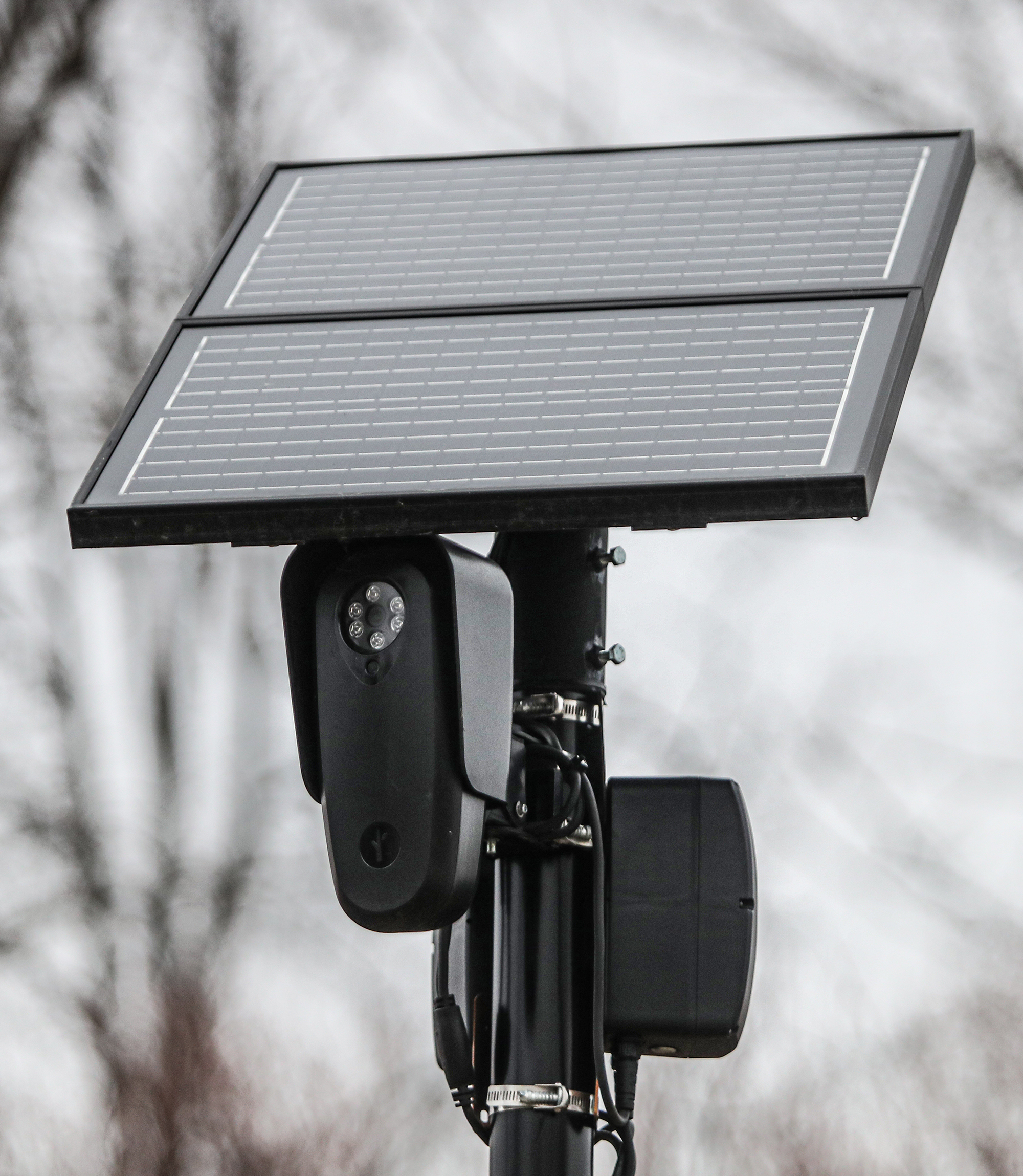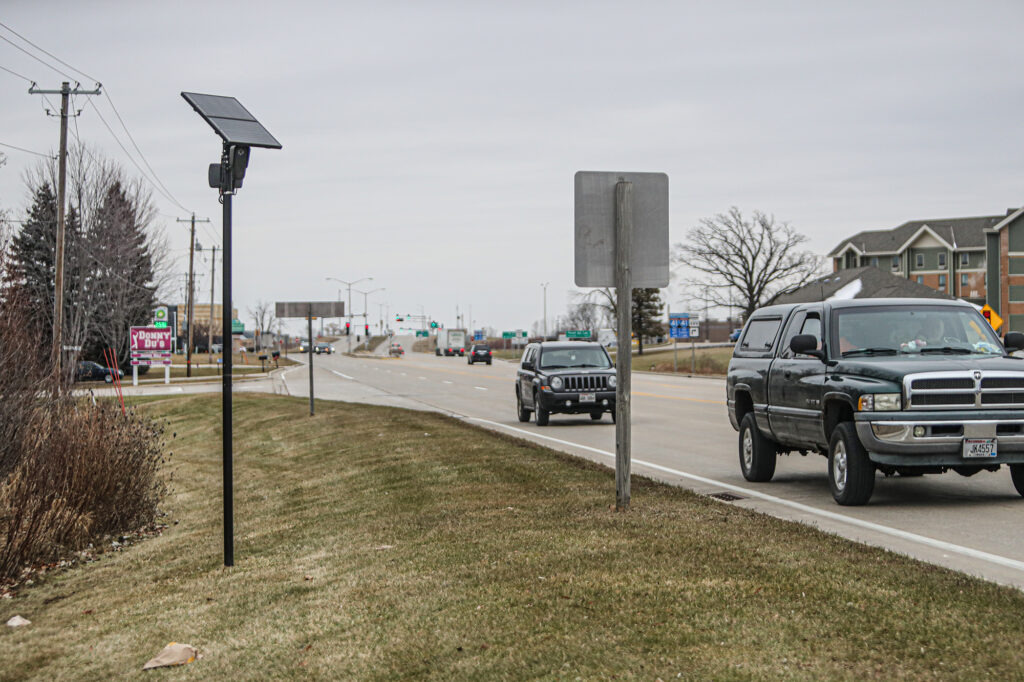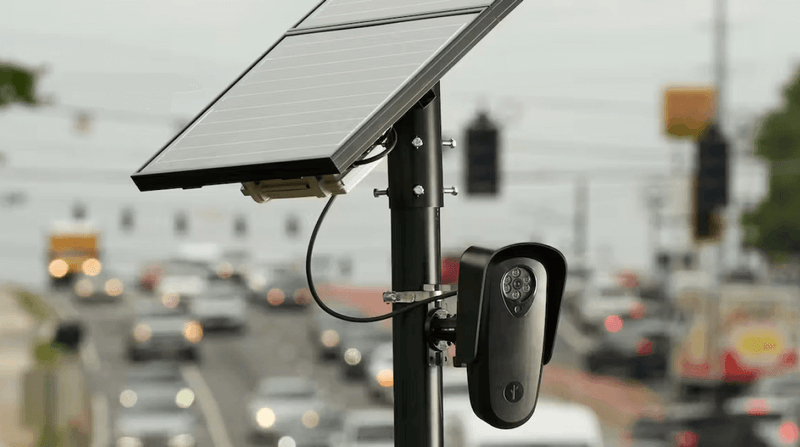Local News
What the “Flock” is that? And should I be concerned?

If you’ve been following KFIZ news for the last few months, you’ve likely seen an article or two mentioning Flock cameras. And like many people, you may be asking what is Flock?
Flock cameras came to light in 2017 when a man by the name of Garrett Langley was dealing with property crimes in his Atlanta neighborhood that police were having trouble solving because no one was witnessing the crimes, or seeing who was in the neighborhood that didn’t belong there. With that, Langley came up with the idea of placing a camera in the neighborhood that would record license plates on vehicles and compile a database that could be compared with plates that resided in the neighborhood to those that may be there to do harm.
Seeing the possibilities of such a camera and database helping others combat crime, Langley brought in Co-Founder Matt Feury and early employees Paige Todd and Bailey Quintrell, and the Flock Safety company was started.
It’s not hard to imagine the desire for law enforcement to want cameras such as this to not only help gather evidence of what vehicles were near a crime scene, but to also get real-time notifications of when a vehicle they are looking for is in their area. Both are tasks Flock cameras can do.
So police and sheriff’s departments around the country have made Flock cameras the hottest tool added to the department since computers could be installed in their cruisers.
Fond du Lac County is no exception. So far 37 cameras have been installed in strategic locations. 14 in the city and 23 in the county. According to Fond du Lac County Sheriff Ryan Waldschmidt, Flock Safety has crime and traffic data analysts that work with each agency to identify locations that have the highest probability of capturing license plates to help identify vehicles associated with criminal activity or wanted/missing persons. Fond du Lac Police Chief Aaron Goldstein says they placed their cameras along high-traffic roads entering the city. This allows officers to be alerted as soon as possible if a wanted vehicle or vehicle associated with a missing person enters the city.
Like with all the new technology however, there is bound to be some sort of backlash, and Flock cameras are no exception. Naysayers of the cameras are comparing Flock camera systems popping up in their communities to an item that fits right into a 1984ish, totalitarian regime. Fearing it’s a camera system that is always watching and recording, stripping us of our right to travel freely without harassment.
And while the cameras are “always on”, they don’t gather near the information you would think they do, based on the way some react to them.
Cameras in public are nothing new. Street cameras have been used to monitor crime and traffic for decades in larger cities. Department of Transportation cameras are lining our interstates all around the country and closed circuit tv cameras are basically standard in every business in existence. All are recording everything they see. Automated license plate readers have been mounted to the top of patrol squads across the country for decades, doing the same thing Flock does but on a mobile platform.
The main difference, and the feature that makes Flock Safety cameras so appealing to law enforcement is the instant recognition of and notification to law enforcement’s squad computers, alerting them when a license plate on a “watch list” is seen. With this information, the officers can see the type of vehicle the plate is on, when it was seen and what direction it is headed. The cameras are in places where one wouldn’t expect privacy from law enforcement. Along busy roadways, not on private property. And the cameras don’t discriminate. No race, ethnic background or social status is considered when the camera takes a photo of a passing vehicle.
Chief Goldstein adds “Flock does not record names, phone numbers, or addresses. Flock does not document traffic violations (i.e. speed, etc.) or run random records checks of drivers and/or occupants. Flock does not include facial recognition capabilities nor capture personally identifiable information. The cameras are also situated to only capture the rear of the vehicle and not the occupants of the vehicle.”

So what does it capture? It’s not just a license plate reader. It can Identify anything about the car that an eyewitness can see, but the computer doesn’t forget it or mix it up with another detail. Flock cameras can identify bumper stickers, luggage racks, damage, after market modifications and can tell what kind of vehicle is in the photo.
So how do they work? Each camera is mounted with a solar panel and rechargeable battery which provides power. A passing vehicle will trigger a sensor which takes a photo. The photo is tagged with license plate information and the other data mentioned earlier and sent wirelessly to a database along with the camera’s location and time the photo was taken.
Each jurisdiction using the system can set how long they want to hold the photos for. Sheriff Waldschmidt says “Since many crimes being investigated and criminals at large are “on the run” for extended periods of time, and significant investigations like drug or human trafficking oftentimes take months or even years to build, our retention policy locally is set for one year.”
There are multiple ways the cameras can help law enforcement.
One is as an investigative tool. If a witness gets a plate of a vehicle used in a crime, but the plate was stolen off another vehicle, there would be no way to know what kind of vehicle the plate was on. With Flock, an officer can enter the day of the crime and the plate information, and if the vehicle passed a Flock camera that day, the officer can use the photo to determine what year and make of vehicle the plate was on.
It can also be used to place a suspect in an area where a crime was committed by showing the suspects car was in the area when a crime was committed.

Another way Flock can be used is real-time situations. Plates don’t just get seen and then stored. A plate can be entered into the system on a “watch list” and when any Flock camera registers the plate, it will be instantly sent to law enforcement’s computers or phones in the area to alert them when and where the vehicle was just seen. This feature has been used to not only find suspects and stolen vehicles, but missing people such as silver alerts where the plates are known on a vehicle the person is known to be in.
This way of using Flock cameras was used in a perfect scenario earlier this summer in Fond du Lac County to find an armed carjacker from another county.
In that incident, the carjacker was chased from Waushara County into Winnebago County where they got away. Early the next morning the vehicle that was carjacked was found in the area where another vehicle was stolen. Fond du Lac County dispatchers put out an attempt to locate on the stolen vehicle and the plates were given in the description. An officer entered the plates into the “watch list” in the Flock system and saw that the vehicle was just logged by a Flock camera in the City of Fond du Lac minutes earlier. Now on high alert, city, county and state units started to converge on the city. Within minutes of the attempt to locate being broadcast, the suspects were in custody.
Having this kind of access to such a powerful tool would prove beneficial to someone that may want to “stalk” where someone has been or is currently.
This has been taken into consideration in most places Flock is used, and that includes Fond du Lac County and City. Sheriff Waldschmidt says “Every entry and query made by a deputy is logged and creates an audit trail to ensure compliance with policies put in place. Similar to the Sheriff’s Office, Police Chief Goldstein says of his department’s usage of the data, “There is strong policy language that addresses accountability and safeguards regarding access to and use of stored data. Only authorized users may access the system. Additionally, any user that performs a search must enter a well-defined legitimate law enforcement purpose that is aligned with public safety goals for their search. Officers are not permitted to search without a valid reason. Search history can be easily displayed for our leadership to see what the system has been used for. Audits are conducted on a regular basis to ensure 100% compliance with our policy’s safeguards.”
But even with strict policies in place, there will always be those that try to get away with it.
Last year, an officer from Kechi, Kansas went into the Wichita Police Department’s Flock database to see where the mother of his children has been. He texted the woman demanding to know where she was on a particular date and time. When she responded how did you know I wasn’t at home, he replied “it doesn’t matter.” The woman brought the matter up to the man’s superiors and an audit was done on the officer’s use of Flock and found he had violated the policies in place. He was immediately fired and charged with stalking.
In closing, Chief Goldstein says “Flock will assist us with reducing crime and increasing our case clearance rates. An overwhelming majority of crimes are committed with a vehicle involved. The license plate numbers give us the objective, actionable leads needed to solve the investigation and hold those who commit crime within the city accountable. The cameras also accelerate the process to narrow down the search radius which may save a life in time sensitive cases like Silver, Green and Amber alerts for example.”
Sheriff Waldschmidt adds “Flock cameras provide another set of eyes to detect and help our deputies locate vehicles associated with criminal activity. Beyond our county line, it allows deputies to identify where a suspect may be from or traveling to, and notify that jurisdiction to assist in locating a suspect who committed a crime here. Likewise, other jurisdictions notify us when a suspect who committed a crime in their jurisdiction is in Fond du lac County, and allows our deputies an opportunity to locate and apprehend the suspect before they victimize one of our own residents.


